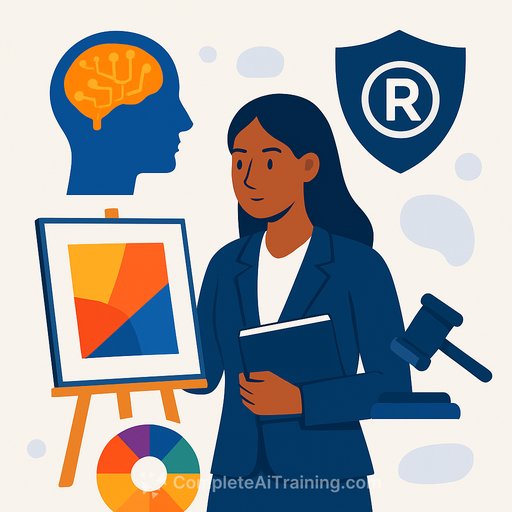Law School Spotlights: AI, Color, and Trademark Law-A Hands-on Case Study
At Drake Law School, a new AI Law Certificate is pushing students to work at the intersection of law, technology, and design. One standout project: 3L Jack Norton teamed up with Professor Sayoko Blodgett-Ford (Law) and Professor Jamey Hart (Art and Design) to study how AI and machine vision "see" color-and what that means for trademark protection.
To ground the legal research, Jack enrolled in Painting I. Learning color theory in studio, then testing how machines interpret color in legal contexts, gave him a rare lens on issues like distinctiveness, confusion, and functionality. His analysis examined pharmaceutical trade dress, including the distinctive purple associated with Nexium.
Why AI Literacy Matters for Legal Professionals
AI touches client work across practice areas-IP, contracts, employment, education, and more. Jack puts it plainly: lawyers need to be ready to address complex questions and client concerns that come with new tools, models, and data sources.
The takeaway: build an AI foundation now. Whether you're advising on marketing claims, platform policies, school technology adoption, or consumer protection, AI is part of the fact pattern-and the evidence.
How Interdisciplinary Work Improved the Research
Observational painting trains attention. That skill transferred directly to analyzing how machines and humans perceive color differently in trademark contexts. The studio practice created a practical framework for testing hypotheses about machine vision and consumer perception.
With guidance from Professors Blodgett-Ford and Hart, Jack combined creative practice with IP doctrine. The result: clearer questions, stronger methods, and a more grounded legal analysis.
Focus Area: Color Marks, Machine Vision, and Pharmaceuticals
- Legal baseline: color can function as a trademark if it identifies source and has acquired distinctiveness, but functional color features are excluded. See Qualitex for the foundational principle.
- Practical wrinkle: in pharma, color may aid identification or signal dosage. That raises functionality concerns even when a color is highly recognizable.
- Machine vision adds a new layer: models may cluster or interpret "the same" color differently under variable lighting, packaging, or camera settings. That matters for confusion analysis, evidence, and enforcement strategy.
- Case example: a brand-associated purple, like on the Nexium product line, invites questions about distinctiveness, consumer association, and how AI systems detect similarity at scale in marketplaces.
For doctrine on color marks and functionality, see the USPTO's discussion of color marks and non-traditional trademarks. TMEP: Color Marks and the Supreme Court's decision in Qualitex Co. v. Jacobson Products.
Process Highlights You Can Reuse
- Pair doctrine with practice: study color theory (hue, saturation, value), then run controlled tests with photography and simple ML classification to see how machines bucket color under real-world conditions.
- Stress test evidence: simulate lighting changes, packaging variations, and camera differences to see where machine vision breaks or misclassifies. Document thresholds and failure modes.
- Tie results to legal standards: map outputs to distinctiveness, secondary meaning, likelihood of confusion, and functionality. Note where machine evidence helps-or misleads.
- Write protocols: create replicable steps for capturing color evidence (devices, settings, environment) so any expert report stands up to scrutiny.
- Plan for scale: consider how marketplaces, search engines, and product databases use vision models. Enforcement may hinge on how those systems index "similar" colors or packaging.
Impact on Career Direction
Jack came into law school interested in IP and AI. This project strengthened that focus. He now works with F3, an education law firm in Des Moines, and especially enjoys assignments with the education technology group involving AI in schools.
Why This Matters for Law Schools and Legal Teams
- Interdisciplinary projects build practical judgment. Studio practice, data collection, and doctrinal analysis together create stronger legal work product.
- Machine evidence is becoming routine. Teams should learn how models perceive color, shape, and layout-and how to validate that evidence.
- Education clients need clear policies and procurement guidance on AI tools. Counsel who understand both pedagogy and model behavior provide better advice.
Keep Building AI Fluency
If you advise on trademarks, consumer protection, or edtech, set a simple goal: run one interdisciplinary mini-project per quarter that pairs doctrine with hands-on testing. It keeps your team current and produces assets you can reuse in client work.
- Explore practical AI learning paths by role: Complete AI Training - Courses by Job
Your membership also unlocks:









